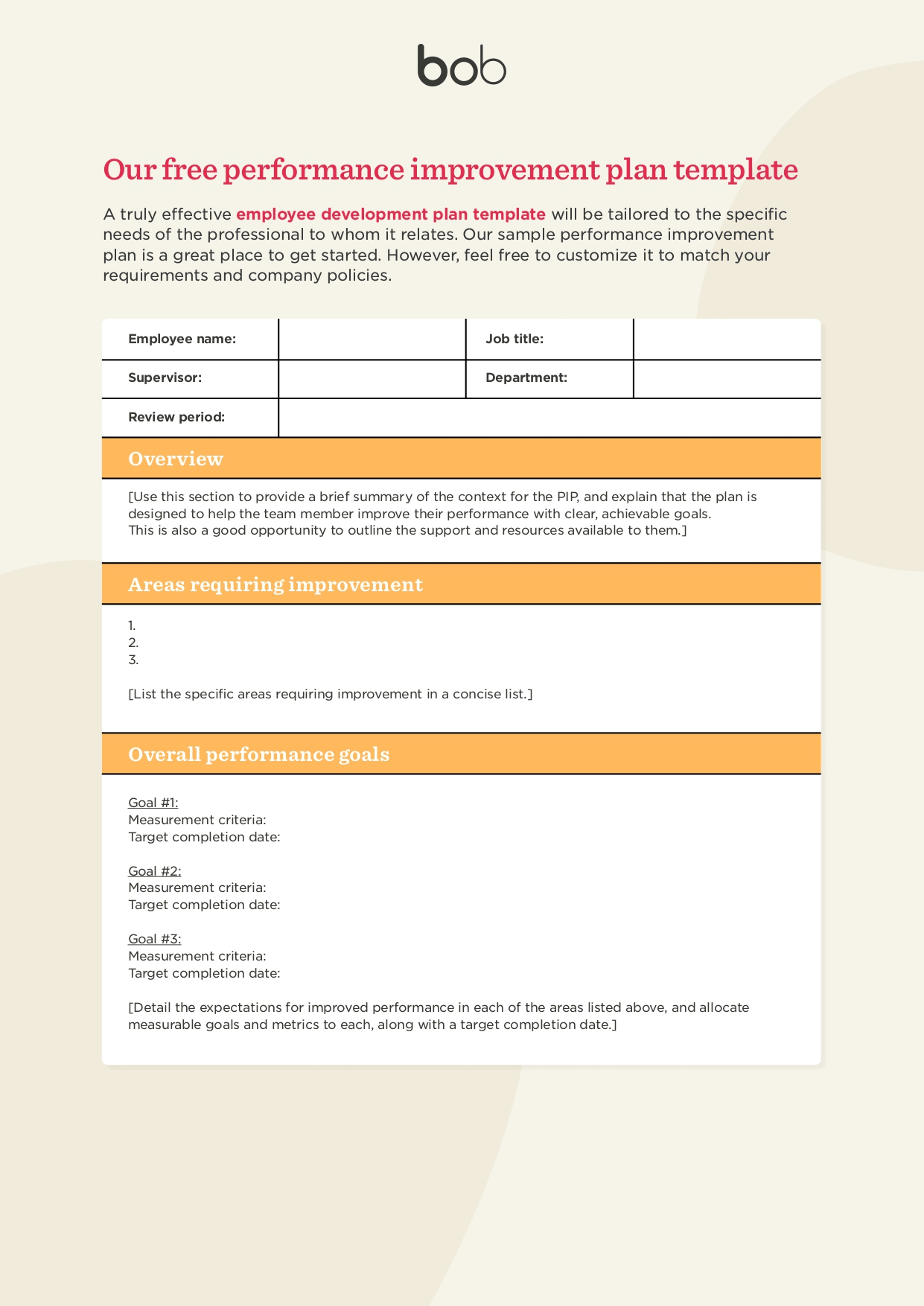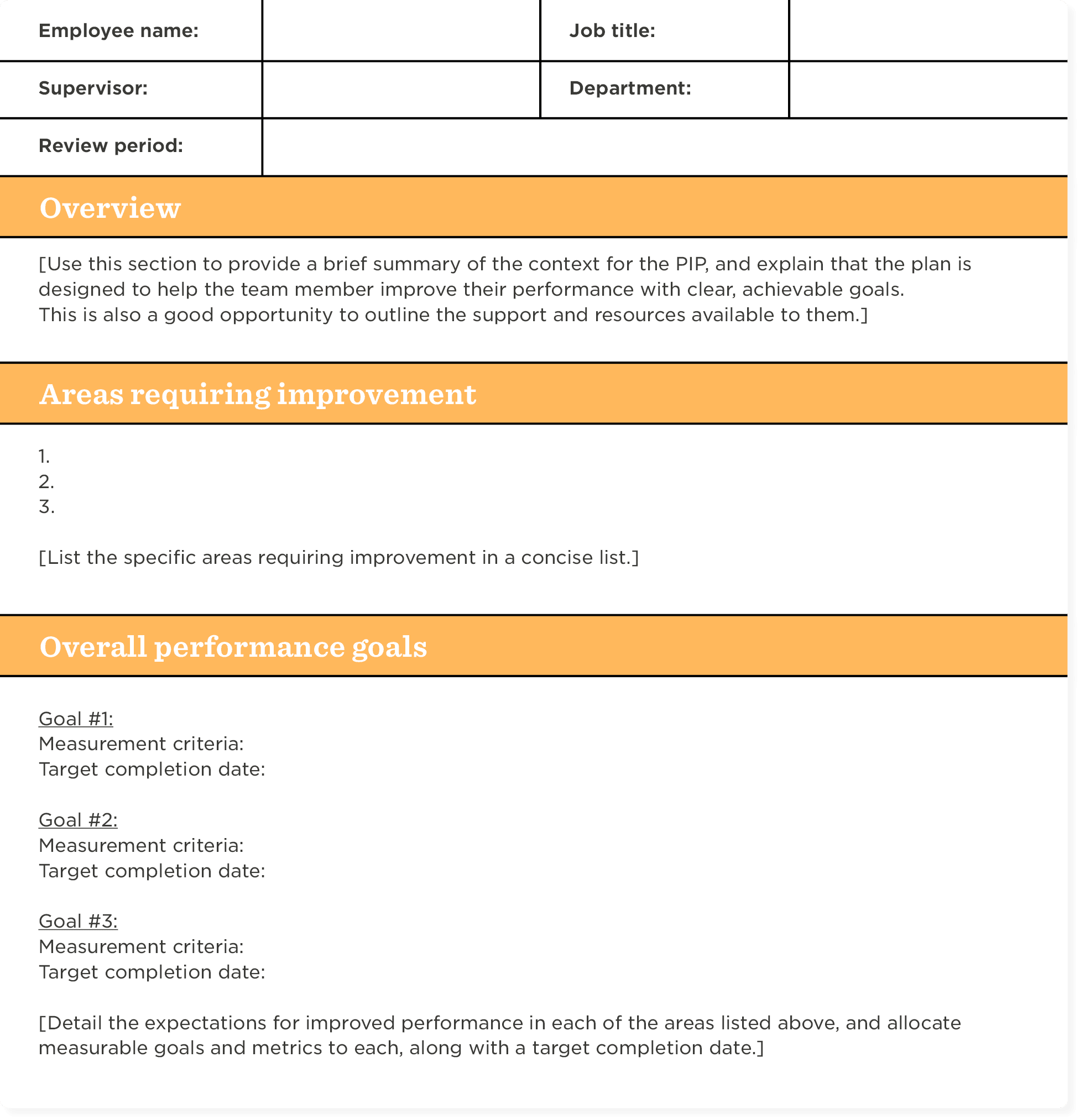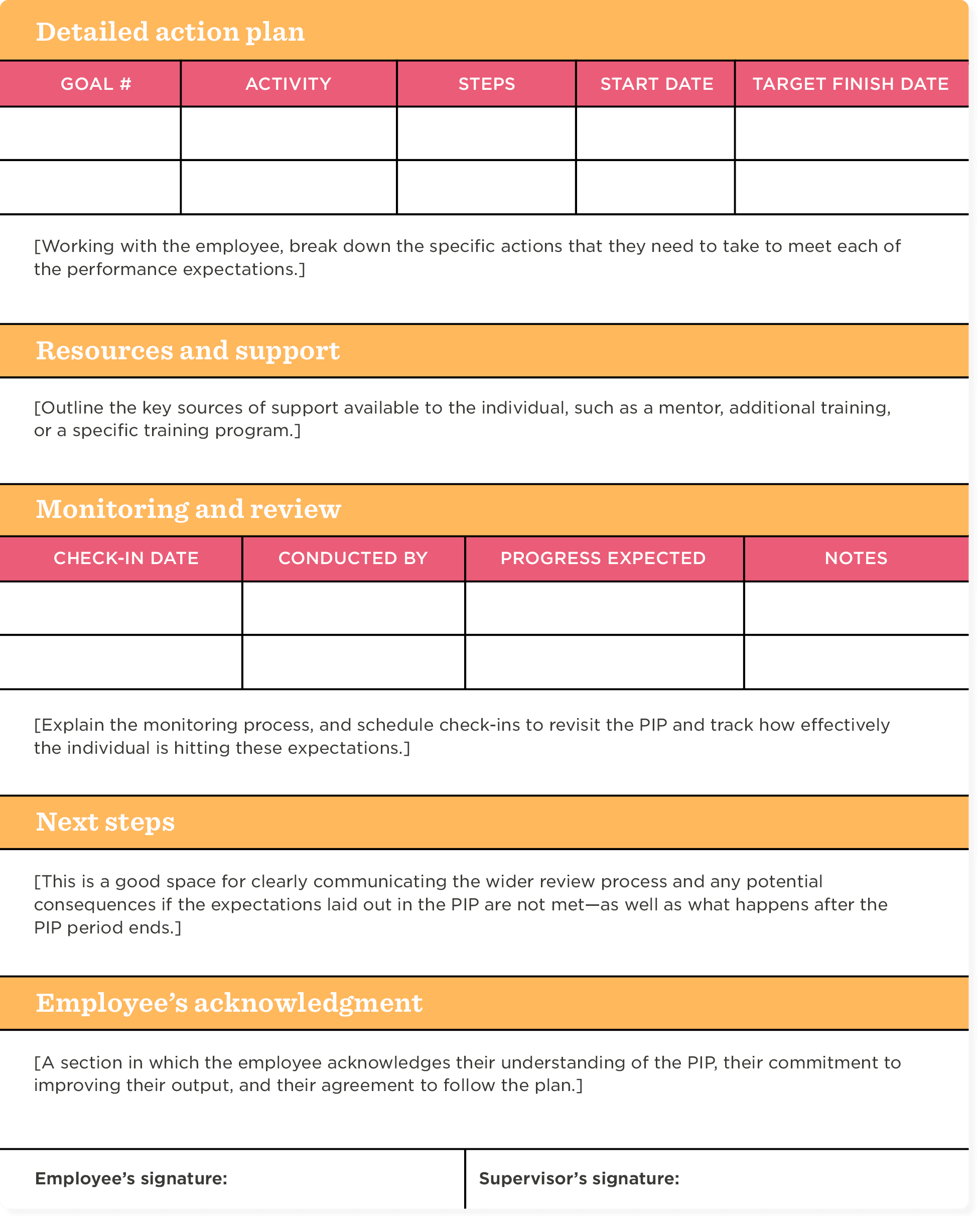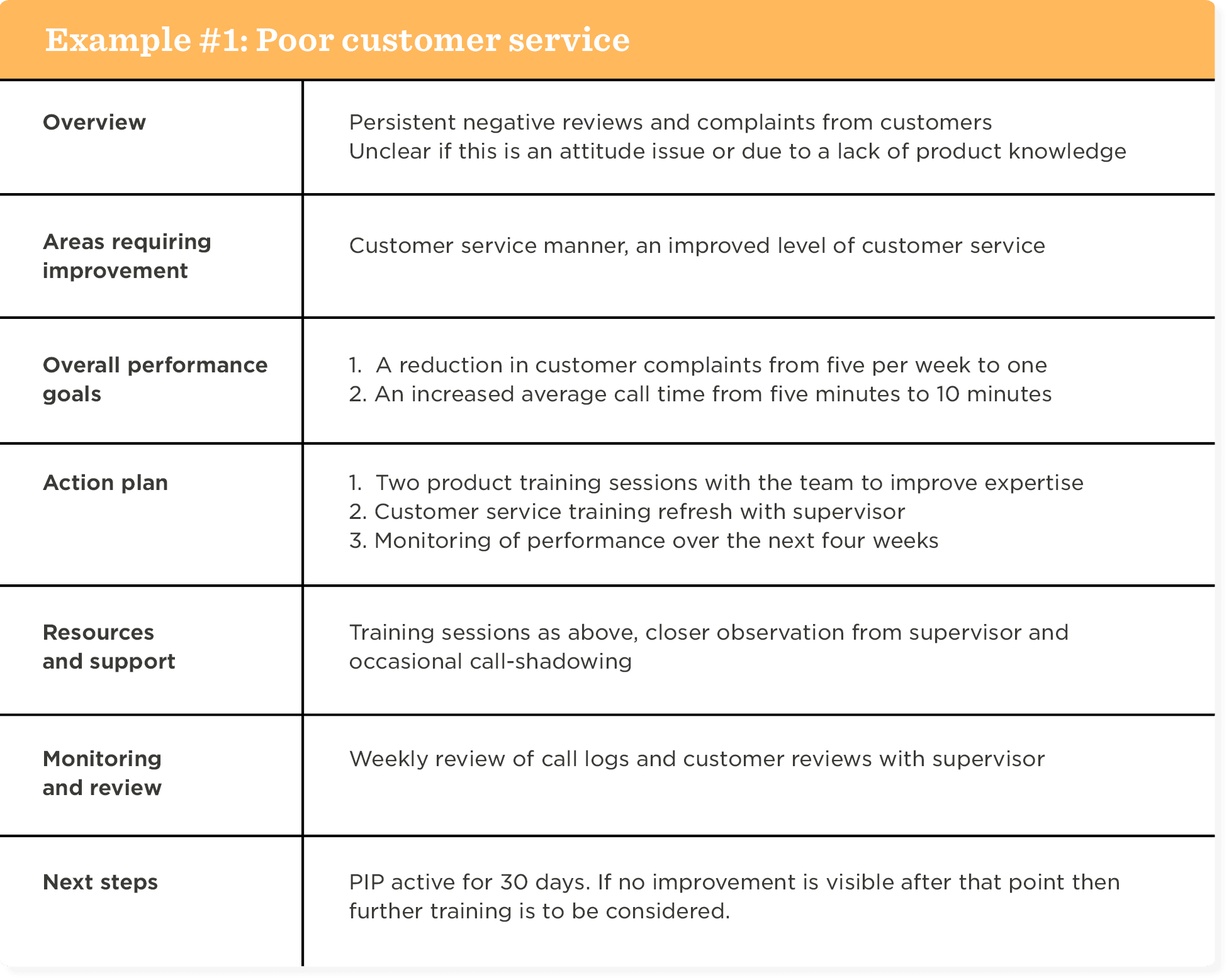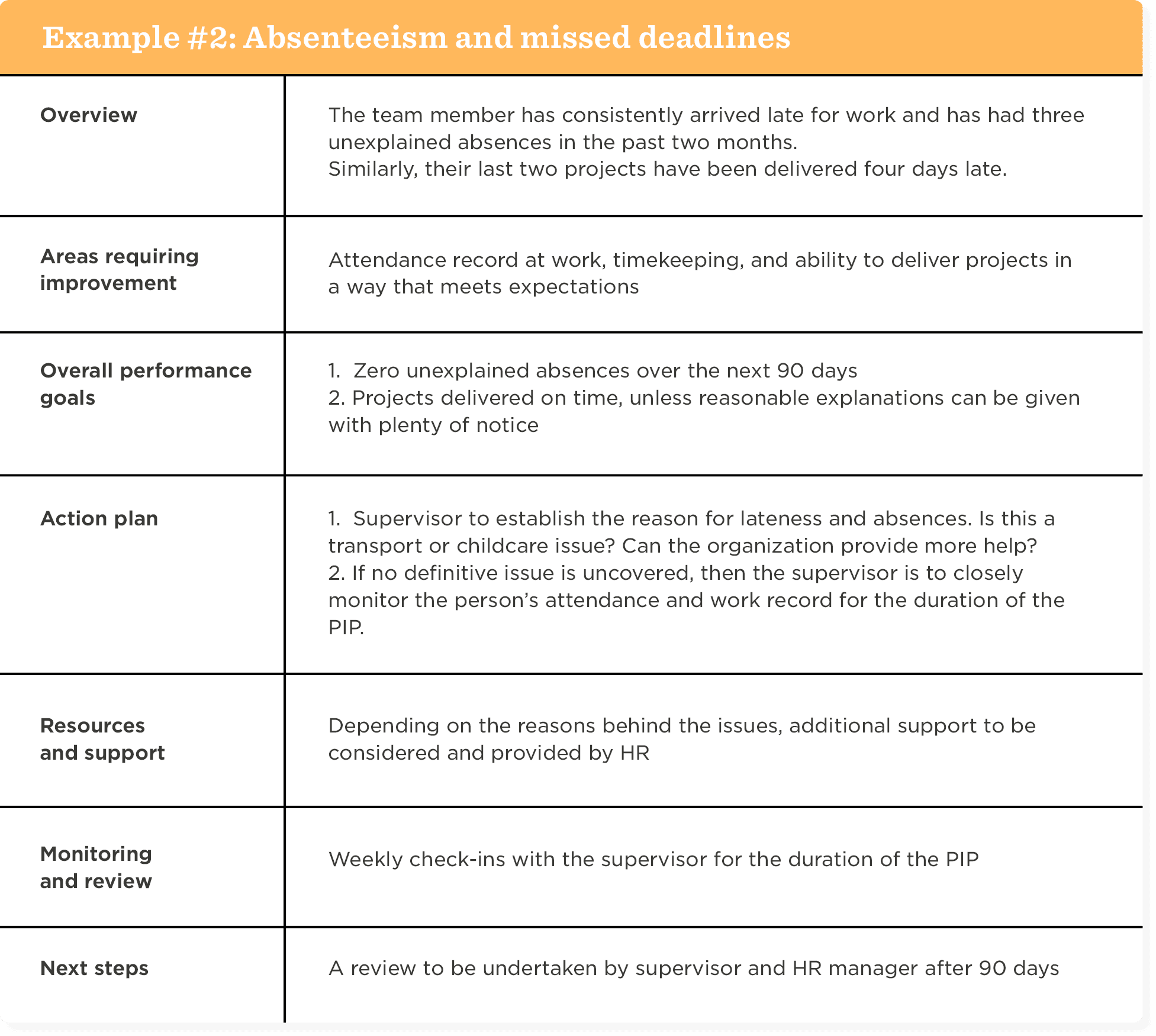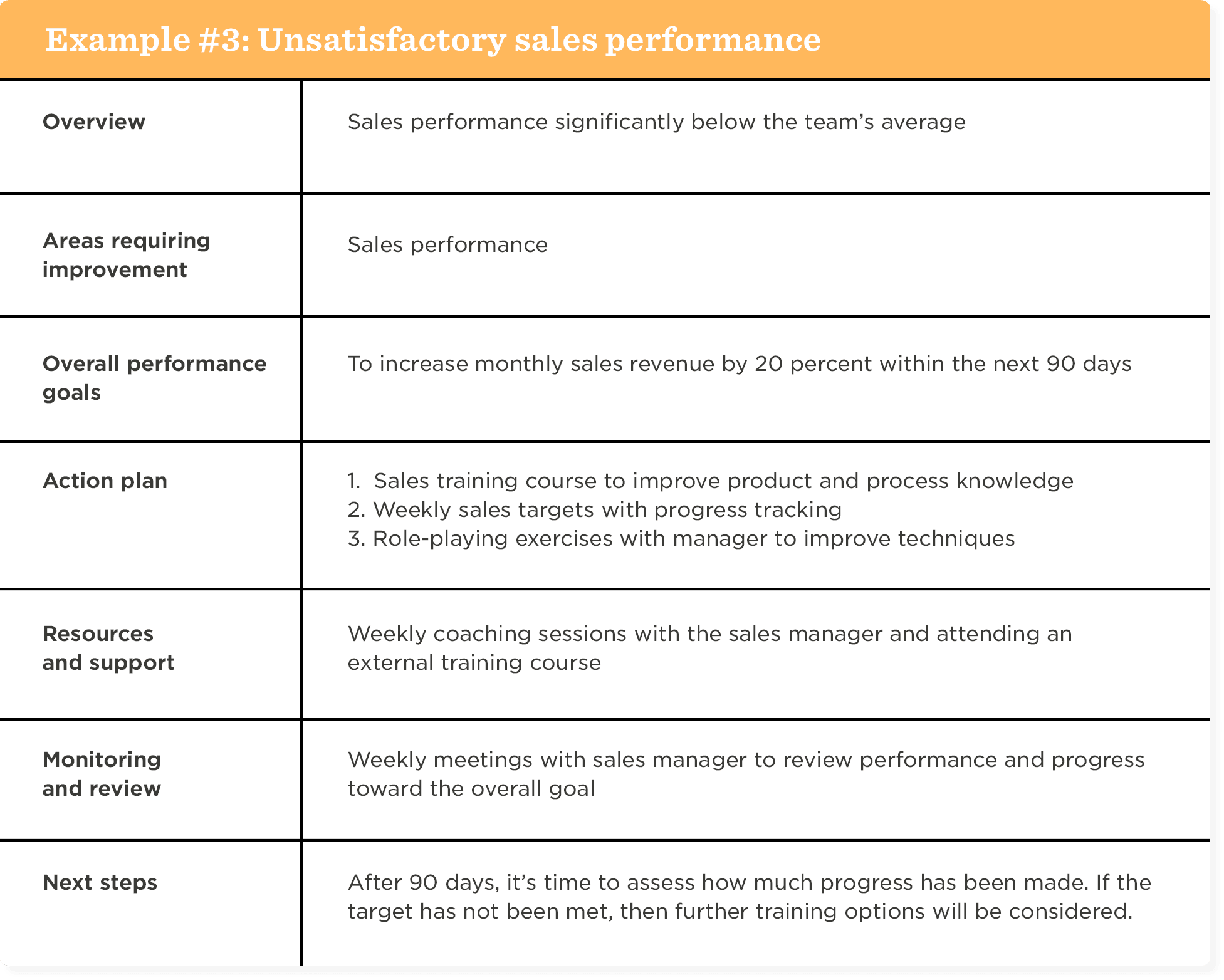When people are struggling to meet the expectations of their job, it’s HR’s task to help them get back on track.
That means identifying what’s been going wrong, and laying out clear, measurable goals for improvement. Depending on the situation, it may also be necessary to provide additional motivation by detailing the potential consequences of output remaining static.
This is where a performance improvement plan (PIP) comes in. It’s a structured document that outlines specific areas of concern regarding someone’s performance. A PIP helps both employers and professionals move forward, by detailing an organized approach to performance management, free from ambiguity.
An effective PIP will identify problems, set expectations, and chart actionable steps the individual can take to close performance gaps. The plan may also outline the consequences if they do not meet the objectives, helping to align the individual’s goals with the wider team’s objectives and giving a sense of purpose and direction.
<<Download our free, performance improvement plan template>>
Most usefully, a PIP encourages open communication, fostering collaboration as you work through any issues together. It provides a clear measurement of the improved performance you wish to see, giving everyone a better chance of achieving that outcome.
In this guide, we’re going to look at how to write a PIP and share a downloadable employee performance improvement plan template for you to customize.
Why use a performance improvement plan template?
Starting your own performance improvement plan from scratch can be a time-consuming task. Instead, a template can save you time and help you treat PIPs equitably across your organization.
Using a PIP template helps to improve your:
- Consistency. A template ensures your teams will follow a structured and consistent format for creating PIPs throughout the business. This makes sure that everyone is treated fairly and that no important elements are overlooked.
- Efficiency. Using a template saves your team time and effort, especially when dealing with multiple employees or creating PIPs regularly. It provides a starting point, reducing the need to build a plan from nothing each time.
- Clarity. Our PIP template provides clear sections for identifying performance issues, setting expectations, outlining action plans, and specifying consequences. This makes it easy for everyone to understand and follow the plan.
- Customization. The basic structure provided by a performance improvement plan sample allows team members to customize it to suit the specific needs of each employee and situation
- Professionalism. Establishing an organization-wide template allows you to unify the design and format of each PIP, making them feel more professional and supporting a more coherent approach to performance improvement
- Documentation. Any HR process around a performance issue requires comprehensive documentation for legal purposes. A PIP template encourages your people to keep a record of issues, expectations, steps, and outcomes, and can be a valuable progress-tracking and reference resource for future evaluations or reviews.
- Training. Templates can be used as training tools for HR personnel and managers, helping them understand the key components of a PIP, any specific details unique to yours, and how they can create one when needed
- Accountability. A PIP template makes everyone involved in the performance review process accountable, with signatures and notes to reflect everyone’s agreement to follow the process laid out
Effectively establishing a PIP template at your organization helps to streamline your HR processes, ensures consistency and accountability, and provides a clear structure for team members and managers alike to follow.
<<Download our free, performance improvement plan template>>
Key components of a performance improvement plan
The best performance improvement plan templates tell the story of a performance evaluation. Make sure your PIP plan includes the following components:
- An identification of performance issues. Your PIP should clearly specify the areas of the team member’s performance that require improvement, using examples and data where relevant
- A clear set of expectations. Measurable expectations for improvement make the process crystal clear for everyone involved. Make sure your PIP outlines what success looks like in each area requiring improvement.
- An action plan. An effective action plan details the steps required for the employee to meet the performance expectations, providing a time frame for each step
- A monitoring process and next steps. The impact of a PIP needs to be measured, so it should include notes on how progress will be monitored, including the frequency of evaluations and who will provide feedback. It’s also useful to include a description of the expected next steps, depending on whether the individual meets the PIP’s objectives by the end of its applicable period.
Crafting an effective performance improvement plan
Crucially, a well-crafted performance improvement plan aims to improve someone’s work rather than punish them. This means it’s important to communicate the grounds for instigating the PIP openly and to establish achievable outcomes.
Done right, you’re more likely to help people reach their full potential and provide a positive contribution to your organization.
Here are our top tips for crafting an effective performance improvement plan:
- Be specific and measurable. Achievable goals need to be clearly articulated, so make sure to define the performance issues with concrete examples or data, and then set SMART goals for resolving them. Avoid vague language, and ensure that success can be objectively measured.
- Set goals collaboratively. You’re more likely to experience a successful outcome from your PIP if you involve the individual in the goal-setting process. Encouraging their input gives them greater ownership over their improvement goals, and ensures that they understand and agree with established expectations.
- Provide support, guidance, and resources. The best performers are part of a team, so offer the necessary resources, training, coaching, and mentoring to help your employee achieve the performance expectations. Use the PIP template to outline the support available and how you’ll provide it.
Customizing the performance improvement plan template
A positive PIP outcome depends on the individual being given specific feedback on their performance, and an achievable path to successfully improving their work.
As a result, a customized plan is crucial for providing a tailored roadmap for each specific situation.
Customization ensures that the identified performance issues are accurately addressed, and the goals set are realistic and relevant. It also demonstrates a personalized approach, fostering employee engagement and commitment to the improvement process.
By adapting the PIP template to the specific circumstances and objectives, you can maximize the likelihood of successful performance improvement and overall employee growth.
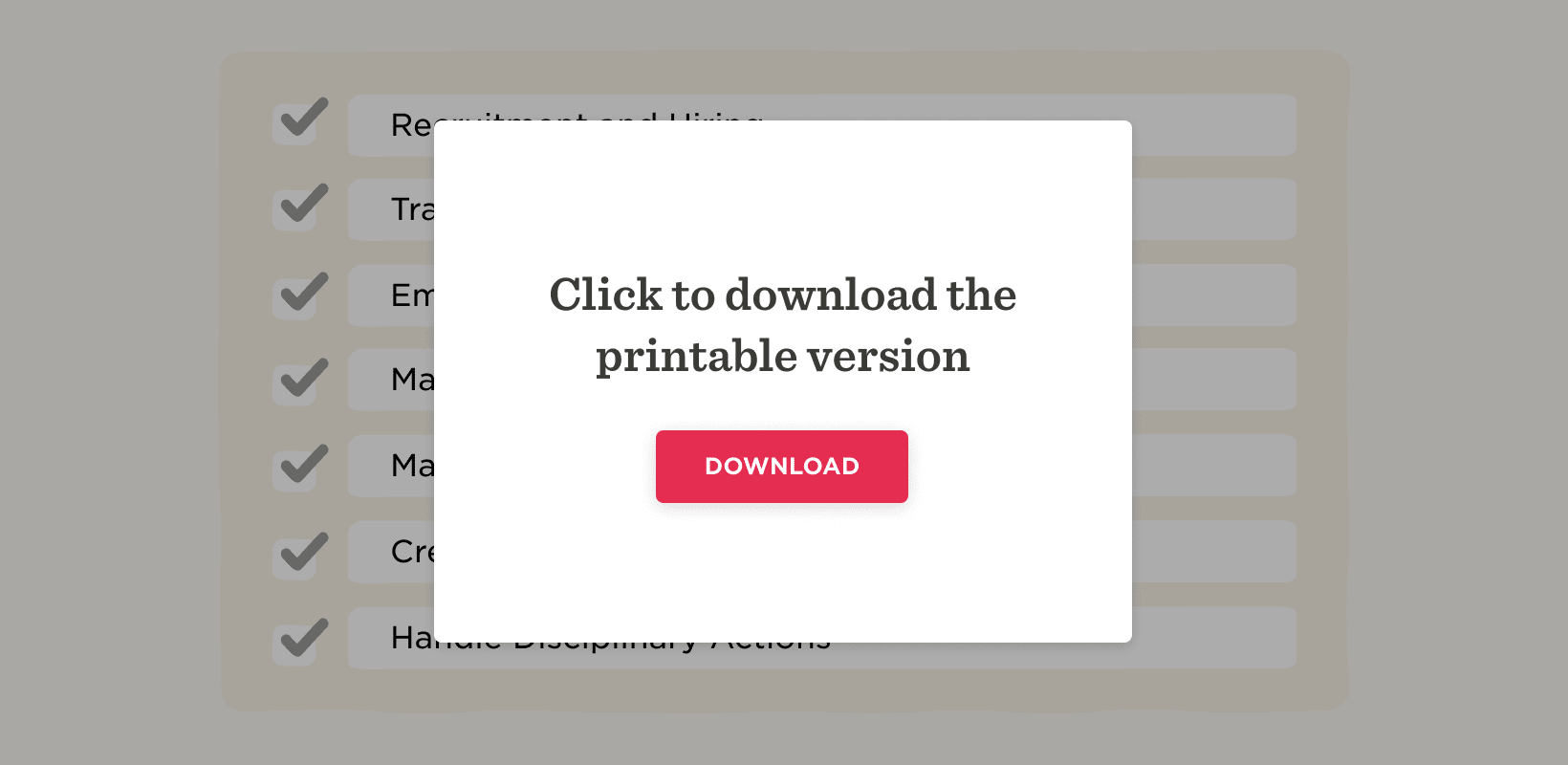
Our free performance improvement plan template
A truly effective employee development plan template will be tailored to the specific needs of the professional to whom it relates. Our sample performance improvement plan is a great place to get started. However, feel free to customize it to match your requirements and company policies.
<<Download our free, printable PIP template>>
Performance improvement plan examples
PIPs come in many different forms, depending on the nature of your business and the specific circumstances of each case. Here are key excerpts from some of the most common completed PIP examples that HR teams face, such as a performance improvement plan for attendance issues or missed sales targets.
Example #1: Poor customer service
Example #2: Absenteeism and missed deadlines
Recommended For Further Reading
Example #3: Unsatisfactory sales performance
Tips for successful PIP implementation
Successfully implementing a performance improvement plan at work requires clear communication throughout. Everyone involved in the process needs to understand their role and responsibilities and the desired outcomes.
It’s also important to regularly use an employee performance review checklist so that you can monitor progress, with ongoing feedback and flexibility to make adjustments where necessary. As you run more PIPs, take lessons on board and be ready to modify your template and approach.
With a coherent training plan supporting the PIP, you’re more likely to set your team up for success. Provide proper resourcing, communicate openly throughout, and consider using employee performance management software and a successful PIP process is just around the corner.

